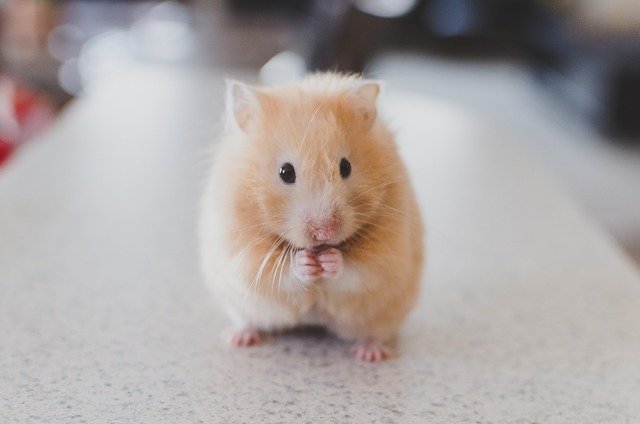
Hamsters Fuzzy Ball of Fun
Hamsters Fuzzy Balls Of Fun
As a child, most of us grew up with hamsters or friends who had hamsters. Even our children are fascinated with these small fuzzy creatures. There are many types of hamsters, dwarf, Syrian, Russian, Chinese, and hybrid. The hamster is a burrower so they prefer to have lots of bedding to hide under as well as tubes to create little nests in. The most difficult aspect of hamsters is telling if they are female or male. Who has bought two hamsters thinking they were the same gender and ending up with ten hamsters? That unfortunately can happen.
A lot of biologists use hamsters and other rodents to show genetic possibilities. In genetics, we often discuss how genes are dispersed in relation to eye color, hair color, and other traits. When you have hamsters as pets you are seeing this first hand. You can have one gold hamster and one white hamster. When they breed you can end up with several color traits from gold, white, black, white and black to many more. Half the fun for kids is seeing the baby hamsters grow up with different colors. It can be a great science project for school as well as having a wonderful pet.
Hamsters are relatively easy to take care for. You can feed them hamster food, vegetables, and little hamster treats, chew sticks, and yogurt drops (but be careful of the amount of sugar). The bedding should be spot cleaned every other day and completely changed weekly or twice a week depending upon how many hamsters you have. The biggest downside to hamsters is their short life span. Most live only a year or two.
There are lots of hamster accessories you can get from tubes to wheels. Hamsters like other pets need to have exercise so giving them wheels to run on or having a hamster ball to run around the house is actually good for them. The tubing and cages come in a variety of colors to add to children's fun. You can create straight pathways to other larger home areas or curve them around to reenter the same cage. Most of the caging is plastic and your hamster will try to chew or claw there way free. You will want to monitor their activity when you clean the cage to make sure they are not producing a hole that they can then escape out of. Some hamster owners go with a metal wire cage with tiny slits to avoid the chewing escape. Your preference will determine the type of accessories you purchase for your cage.
Handling hamsters should be done at certain times and you should always wash your hand before and after. Hamsters can have a tendency to bite if they are not socialized at least 15-20 minutes a day or if they become scared. Hamsters are nocturnal so be careful when you wake them up they can be a bit grumpy. Who isnt grumpy when they get woken in the middle of theri sleep? Be cautious with little children and make sure they know how to handle them correctly. You should always scoop tour hand around the hamster and make sure you are close to the ground so they don't fall from a high distance.
Hamsters are a lot of fun for all ages especially if want an easy pet your child can care for. You will want to make sure you feed your hamster properly by not over feeding them while maintaining proper exercise. When your hamsters procreate, you will want to separate out the mother and children from the rest of the crew. A cautionary note Dwarf hamsters are very susceptible to infections with cedar chips because it can tear holes in their tiny mouths and try to avoid corn with Dwarf hamsters they dont digest it very well.
As with any pet make sure you have the interests and means to care for your pet long term. Not just the initial cost but also long term cost and care.

